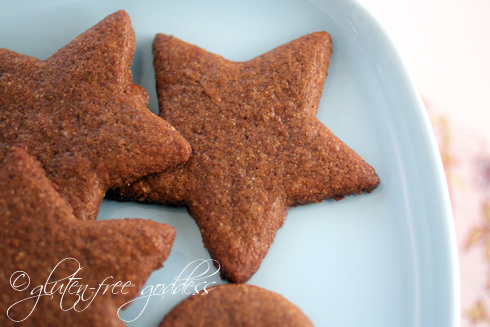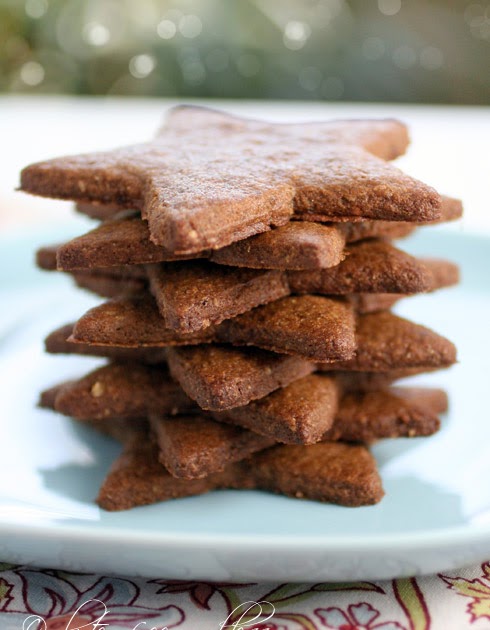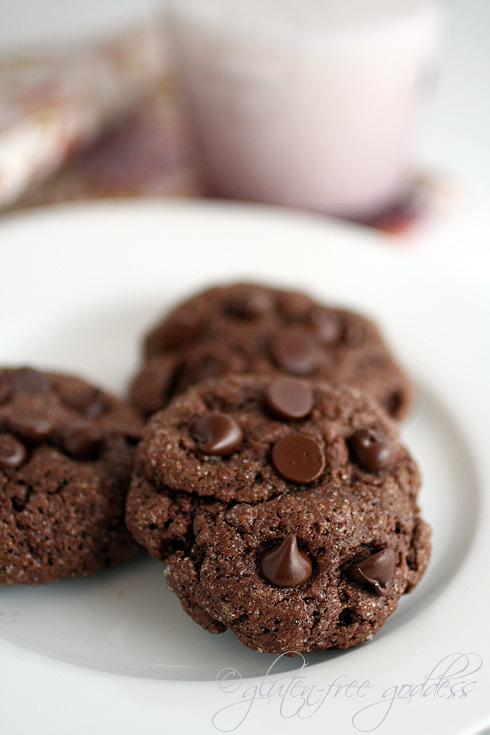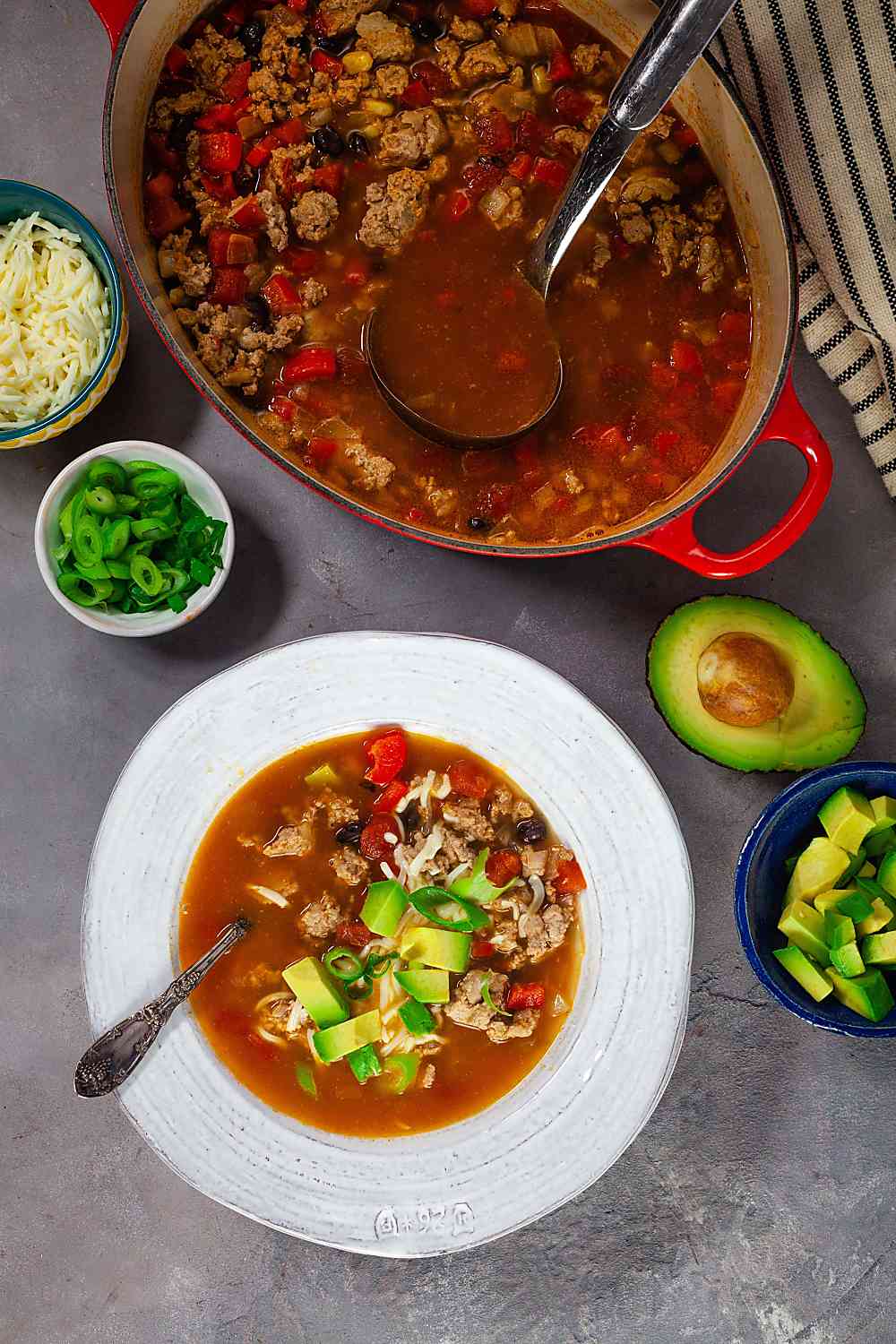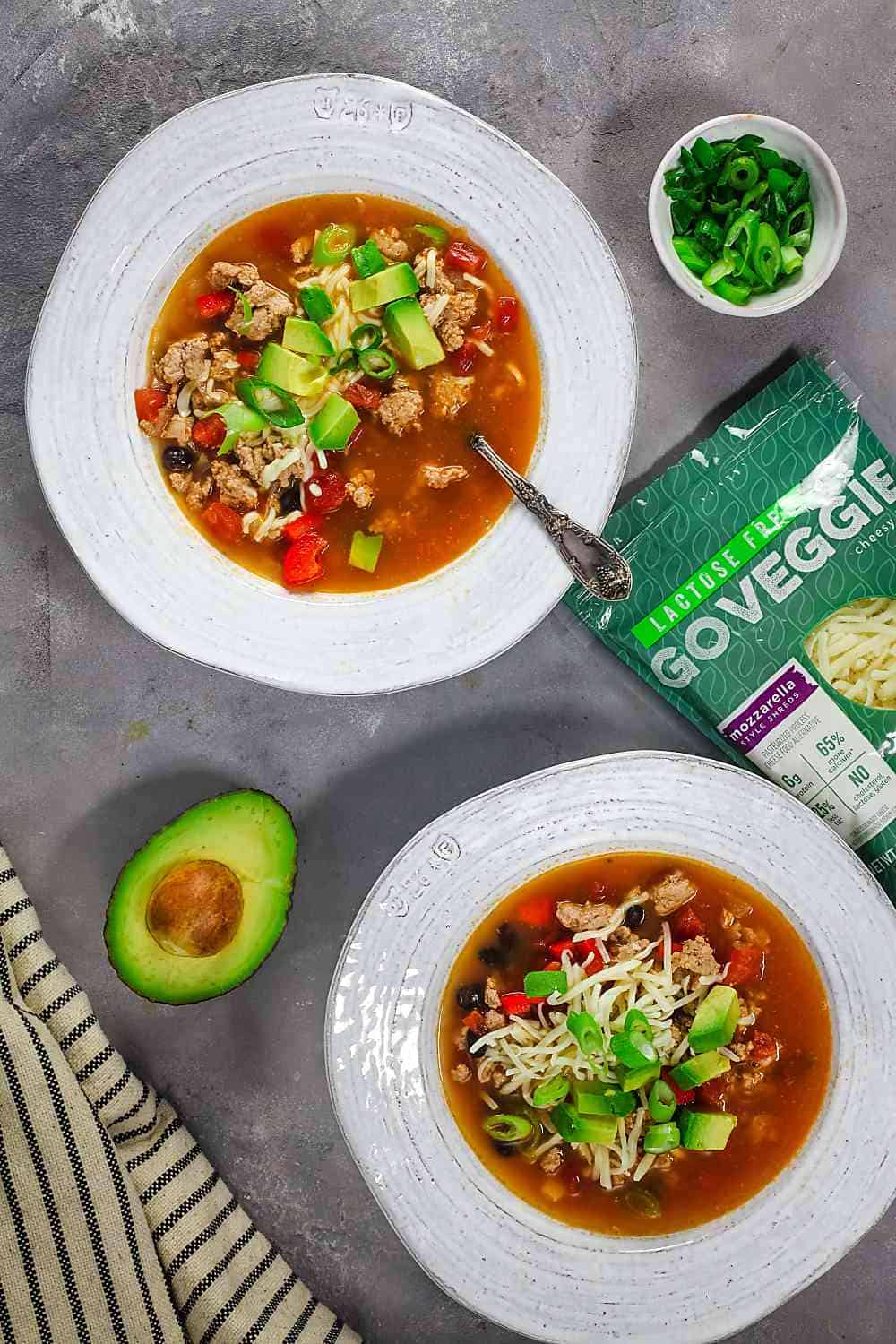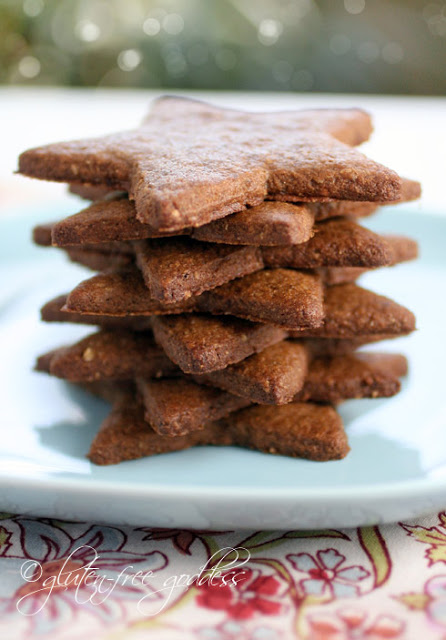
Gingersnaps, or cut-out cookies? How about both?
This time of year simply begs for gingersnaps- the classic and humble cookie that tastes old fashioned and elegant and post new wave all at once. A subtle, spicy, gingery bite that snaps with a crunch to awaken satiated taste buds soaked in a holiday sea of egg nog, cheese logs and peanut butter balls.
Fancy cookies, these are not.
Slathered with green icing and star sprinkles?
Not exactly.
Though, you could, I suppose. Slather these. And sprinkle with abandon.
If you’re of a mindset that more is more, and nurture not the minimalist mantra of Less.
The choice is yours.
Go old fashioned and let the gingersnap goodness tingle on its own.
Or go wild.
And get your frosting on.
It’s your party.
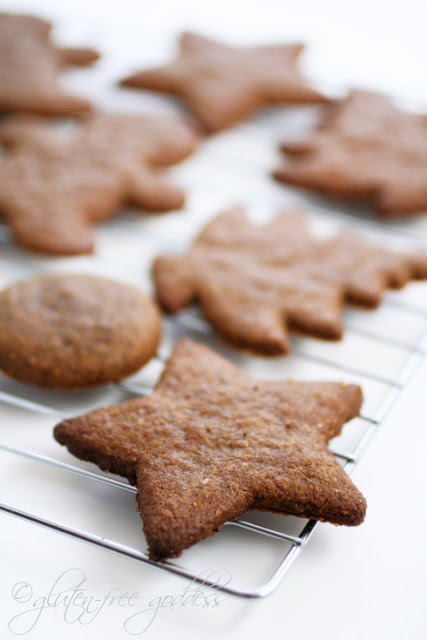
Karina’s Gluten-Free Gingersnaps Recipe
By Karina Allrich December 2010.
The dough for these gluten-free gingersnaps lends itself beautifully to rolling out and cutting into shapes. Usually vegan gluten-free dough is finicky. But I found it surprisingly easy to roll out- with a simple technique we use for making crackers. The cut-outs were tricky to move, though. But don’t fret. I have a method to bypass that horror (cookie shapes breaking into sad little twisted lumps).
Ingredients:
1 cup sorghum flour
1 cup tapioca starch/flour
1/2 cup hazelnut flour or almond flour
1 cup light brown sugar
1 teaspoon ground ginger
1 teaspoon ground cinnamon
1/4 teaspoon ground nutmeg
1/4 teaspoon ground cloves
1/4 teaspoon fine sea salt
1 1/4 teaspoons xanthan gum
1 teaspoon baking soda
1/2 cup Earth Balance Sticks, or Spectrum Organic Shortening
1/4 cup unsulphured molasses
4 tablespoons coconut milk (or non-dairy milk)
Supplies you’ll need:
A large baking sheet. An Exopat or Silpat. Plastic wrap. A rolling pin. Cookie cutters.
Instructions:
Preheat the oven to 350ºF.
Whisk together the dry ingredients in a large mixing bowl.
Use a whisk attachment or pastry cutter to cut in the shortening and molasses. The mixture will be sandy and crumbly.
Add the coconut milk one tablespoon at a time.
Mix after each spoonful to keep a close eye on the consistency. You don’t want the dough too sticky. It should still appear somewhat crumbly- but- when you pinch the dough it should stick together and feel like cookie dough. I used four tablespoons of So Delicious coconut milk to get to this consistency.
Divide the dough in half. Wrap one half in plastic wrap and pop it in the fridge to chill while you work with the other half.
Note: If the dough seems too soft and warm- chill all of it for an hour to improve the rolling out process.
Split the half dough ball in two.
Place the Exopat liner on the counter. Put the dough in the center, and using your palms, lightly press the dough into a flattish round shape.
How does the dough feel? If it’s warm or very soft you may need to chill it before working with it. If it feels sturdy and pliable, proceed.
Cut a swath of plastic wrap the size of the Exopat and lay it on top of the dough. Use a rolling pin to roll out the cookie dough evenly. The plastic wrap makes this super easy. When the dough is evenly 1/4 inch thick, pull off the plastic and save it for the next batch.
Use cookie cutters or juice glasses to cut shapes into the dough- not too close together. Do not move the shapes you cut. You are just cutting the dough.
Carefully pull away the pieces of dough surrounding the cookie shapes, leaving the cookie shape itself on the Exopat (I used a butter knife to help me do this).
When you’re done you’ll have a sheet of shapes ready to bake!
Roll up the excess dough to reuse.
Place the baking sheet next to the Exopat liner and gently move the liner with cookies onto the baking sheet.
Bake in the center of a preheated oven for 8 to 10 minutes.
Note: Use this first sheet as a trial run to see your best baking time. The thinner the cookie the faster it will bake. Mine were ready at 8 minutes.
These gingersnaps crisp as they cool. So if you like a chewy, tender ginger cookie, bake for less time, say 7 to 8 minutes. If you prefer them crunchy gingersnap style, bake them at least 8 minutes, up to 9 minutes- if they aren’t rolled very thin. Remember the thinner they are the faster the bake. For thicker cookies, bake up to 10 minutes- but remember, these really do crisp as they cool to room temperature, so experiment with timing.
When the cookies have firmed up and are cooled enough to handle, remove them to a wire rack to continue to cool and crisp up.
Repeat the process for the remaining cookie dough.
Note: If you bake two sheets at a time, your baking time may vary from mine. I baked one sheet in the center. Rotate the pans to help with even baking.
When the cookies are cool, divide them up and store them in sandwich bags, inside a large freezer bag. Freeze for maximum taste and texture preservation.
Makes 3 to 4 dozen cookies, depending upon the size of the cut-outs.
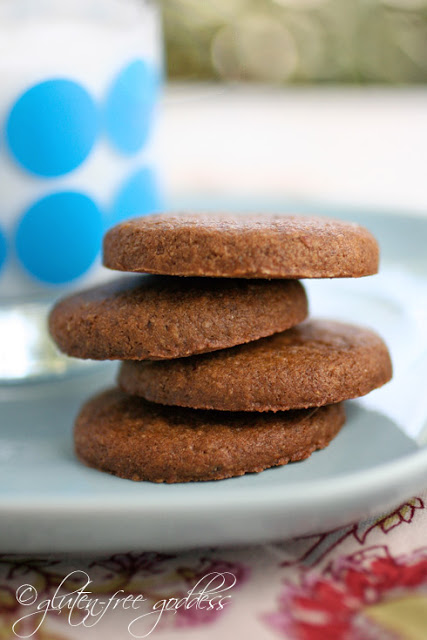
I made half the batch as classic gingersnaps- small round snaps of gingery goodness. Perfect for dunking in ice cold coconut milk. I rolled the dough out slightly thicker and used an espresso cup, and have a delightfully tender, chewy center.
I bagged and froze extras for easy take-along treats. I tuck them in my purse. They’re fabulous with a soy chai latte. Just sayin’.
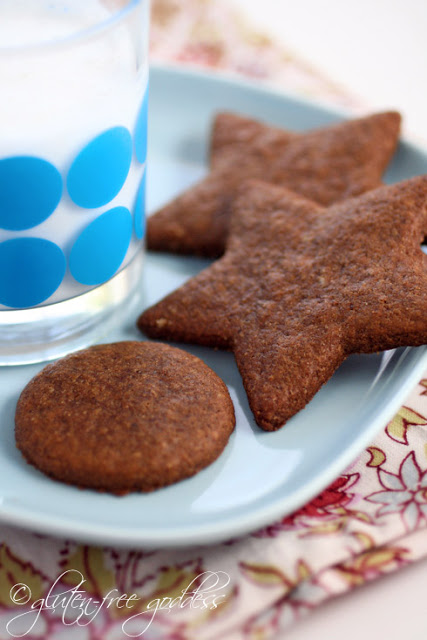
Recipe Notes:
Use fresh spices. Not last year’s. These cookies shine with spicy flavor, so don’t use stale spices you’ve had kicking around since Santa Clause was a kid.
For those of you avoiding nut flours, I suggest trying your favorite medium weight gluten-free flour as a substitute for the hazelnut flour. The hazelnut flour is slightly sweet and nutty. So you’ll want to replace it with a good tasting flour- not a bean flour.
For subbing the coconut milk, any non-dairy milk will work- but again, choose a good tasting sub. I think any nut milk or rice milk should work. Choose a vanilla milk for added flavor.
For subbing the organic shortening, I find oil sometimes problematic in cookie recipes, so I’m not sure I’d recommend using oil. Perhaps a solid coconut oil or vegan stick margarine. If you are not vegan, and use butter, that will work.
Why I use an Exopat or Silpat- a silicone liner for the baking sheet- I find that gluten-free cookies will too often spread, and brown too much if baked directly on a baking sheet. Unless you use a sheet with “cushioned air”- those really slow down the baking time.
These are a pleasantly crisp gingersnap-style cookie. If you frost them with icing, it will soften the cookie. So if you prefer a softer cookie- ice these.
